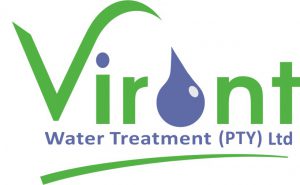Chlorination
Chlorine is added to drinking water as a disinfectant to destroy pathogenic (disease-causing) organisms. It is usually applied in one of several forms: elemental chlorine (chlorine gas), sodium hypochlorite solution (bleach) or dry sodium/calcium hypochlorite powder. When applied to water, each of these forms produces “free chlorine” where one kilogram of chlorine gas provides approximately as much free available chlorine as 8.3 litres of sodium hypochlorite (12.5% solution) or approximately 1.5 kilograms of sodium or calcium hypochlorite (65% strength). Although each form of chlorine is effective in disinfecting water they have different advantages and limitations depending on the application. Generally, chlorine gas is used in large treatment works but also smaller municipal systems where the water is derived from surface water bodies such as dams and rivers. Sodium Hypochlorite is mostly used when treating ground water for smaller sized population requirements and calcium hypochlorite is used primarily for very small water flows supplying small groups of people or individual households.
Chlorination offers a number of benefits in addition to killing off pathogenic organisms, including:
- It helps to reduce many disagreeable tastes and odours;
- It eliminates slime bacteria, molds and algae that commonly grow in water supply reservoirs, on the walls of water mains and in storage tanks;
- It removes chemical compounds that have unpleasant tastes and hinder disinfection; and
- It helps to remove iron and manganese from raw water.
One of the most important benefits of chlorine disinfection over all other forms of disinfection is that it can provide a “chlorine residual” in the water that carries on disinfecting the water right up to the final consumption point and has the added benefit of preventing algal and bacterial slime growth right up to the end points of the water distribution system.
In 1997, Life magazine declared, “The filtration of drinking water plus the use of chlorine is probably the most significant public health advancement of the millennium.” Death rates due to cholera, typhoid fever, dysentery and hepatitis have dropped precipitously worldwide since the adoption of the chlorination of drinking water a century ago and life expectancy throughout the world has increased substantially in no small part due to using chlorine in water disinfection. World leaders are increasingly recognizing that safe drinking water is a critical building block for sustainable development and that chlorination in particular can provide cost-effective disinfection for both remote rural villages as well as large cities.
